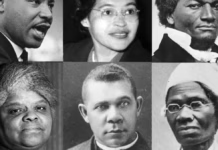Traveling through the United States during the era of segregation was not the same experience for everyone. For Black Americans, especially in the early to mid-20th century, taking a road trip or even a short drive across state lines could be dangerous and filled with uncertainty. One of the most important tools that helped Black travelers navigate these challenges was The Negro Motorist Green Book, commonly known as The Green Book. This travel guide was more than just a list of safe places to stop, it became a symbol of resilience, community, and empowerment. In this article, we will explore what the Green Book was, why it was created, and why it remains an important part of American history.
What Was the Green Book?
The Green Book was a travel guide published annually between 1936 and 1966. Officially titled The Negro Motorist Green Book, it was created by Victor Hugo Green, an African American postal worker from Harlem, New York.
The book listed hotels, restaurants, gas stations, barbershops, beauty salons, and other businesses across the United States that welcomed Black travelers. It was not just a directory; it was a lifeline that helped African Americans avoid humiliation, discrimination, and in some cases, physical danger.
The guide quickly grew in popularity, and by the 1940s it covered not only the United States but also international destinations in Canada, Mexico, and the Caribbean.
Why Was the Green Book Created?
To understand why the Green Book was necessary, we must look at the social and political climate of the time. During the Jim Crow era, laws enforced racial segregation across the South, while unwritten rules and practices upheld discrimination in the North and West. Black travelers faced numerous challenges:
- Refusal of service:Many hotels and restaurants would not allow Black patrons.
- Sundown towns:Certain towns prohibited Black people from staying after dark, putting them at risk of harassment or violence.
- Limited public accommodations:Roadside facilities like restrooms, gas stations, or diners were often off-limits to African Americans.
- Personal safety concerns:Driving through unfamiliar areas could lead to confrontations with law enforcement or racist individuals.
Victor Green envisioned a publication that would help Black travelers find safe places and plan their trips with confidence. His tagline for the book was hopeful: “There will be a day in the near future when this guide will not have to be published.”
What Did the Green Book Include?
The Green Book contained practical information that made travel safer and less stressful. Listings included:
- Hotels, motels, and boarding houses that accepted Black guests.
- Restaurants where African Americans could dine freely.
- Service stations and mechanics that would serve Black motorists.
- Barbershops, beauty parlors, and other personal care services.
- Tourist attractions, resorts, and even private homes that opened their doors.
The guide was organized by state and city, making it easy to plan routes. Some editions even included maps, travel tips, and advertisements from Black-owned businesses.
Why Was the Green Book Important?
The importance of the Green Book cannot be overstated. It was not just a travel guide ,it was a survival guide. Here are the key reasons why it mattered so much:
1. Ensured Safety on the Road
In an era when a wrong stop could result in humiliation or violence, the Green Book gave Black travelers confidence. They knew where they would be welcomed, reducing the risks of discrimination and hostility.
2. Supported Black-Owned Businesses
Many of the listings in the Green Book were Black-owned hotels, restaurants, and shops. This not only provided safe havens but also strengthened the economic foundation of African American communities.
3. Promoted Freedom of Travel
Car ownership became a symbol of independence for many African Americans. While public transportation was segregated, driving offered a sense of freedom. The Green Book made that freedom more attainable by helping travelers navigate safely.
4. Built a Sense of Community
The guide created a network of trusted places across the country. Travelers often shared copies or recommended businesses, fostering solidarity within the Black community.
5. Historical Legacy of Resistance
The Green Book was a quiet but powerful form of resistance against racial oppression. It demonstrated how African Americans adapted and thrived despite systemic barriers.
The Decline of the Green Book
The Civil Rights Act of 1964, which outlawed segregation in public accommodations, marked the beginning of the end for the Green Book. As legal barriers to equal access were dismantled, the need for such a guide diminished. The final edition was published in 1966.
Although the Green Book was no longer necessary for survival, its legacy remains deeply significant. It represents the struggles and determination of Black travelers during one of the most difficult periods in American history.
The Green Book in Modern Culture
The story of the Green Book has gained renewed attention in recent years. Documentaries, museum exhibits, and the 2018 Academy Award-winning film Green Book have introduced its history to wider audiences. However, it’s important to note that while the film sparked conversation, the real Green Book was less about personal friendship and more about collective survival. Today, several archives and digital projects have preserved old copies of the Green Book, allowing people to explore its listings and better understand its impact.
Lessons from the Green Book
The Green Book teaches us valuable lessons that are still relevant:
- The importance of safe spaces:Access to inclusive environments remains a crucial issue for marginalized groups worldwide.
- Community resilience:Collective efforts can create tools for survival even under oppressive systems.
- Travel as freedom:The ability to move freely without fear is a fundamental human right.
Conclusion
The Green Book was far more than a travel guide. It was a beacon of hope, a roadmap to safety, and a testament to the resilience of Black Americans during a time of deep racial injustice. For three decades, it provided the information necessary to navigate a segregated America with dignity and security. Its importance lies not only in what it offered to travelers of the past but also in the lessons it leaves for us today. The Green Book reminds us of the ongoing need for equality, inclusivity, and respect in every corner of society.
FAQs
- Who created the Green Book?
The Green Book was created in 1936 by Victor Hugo Green, a Black postal worker from Harlem, New York.
- How long was the Green Book published?
It was published annually from 1936 until 1966.
- What kind of information did the Green Book provide?
It listed hotels, restaurants, gas stations, and other businesses where Black travelers would be welcomed.
- Why was the Green Book important during segregation?
It ensured safety, promoted Black-owned businesses, and allowed African Americans to travel more freely during an era of racial discrimination.
- What happened to the Green Book after the Civil Rights Act?
After segregation was outlawed in 1964, the need for the Green Book declined, and its final edition was published in 1966.






